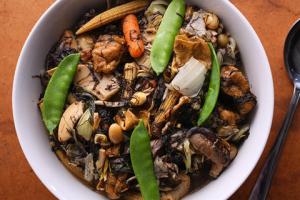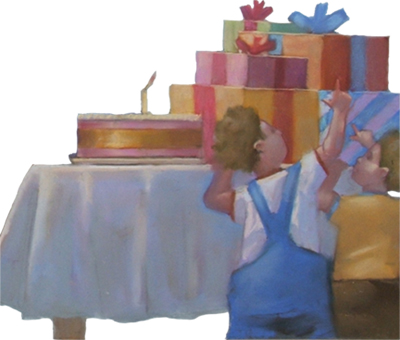Today is Chinese New Year! Traditionally, the night before Chinese New Year, Chinese families will gather around and eat dinner together, much like this plate from the LEE & LOW title, Auntie Yang’s Great Soybean Picnic:
Auntie Yang’s Great Soybean Picnic author and illustrator Ginnie and Beth Lo were kind enough to share one of their favorite soybean recipes with us: Mapo Tofu! While not a traditional Chinese New Year dish, the Lo sisters say that “mapo tofu is a Lo family favorite that we eat on the holidays, Christmas, and Chinese New Year.”





